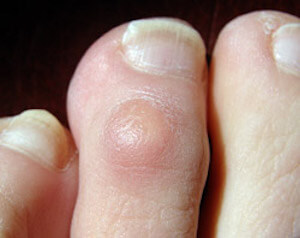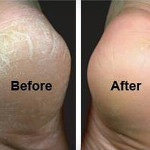Best Way to Treat Corns
Corns are thickened part of a small area of the skin that can be excruciating and uncomfortable. This thickness usually happens on the toes, particularly the little toe. Corns come up because of friction on the toes’ skin, which is as a result of excess rubbing and pressure from tight shoes. If you have this issue, we’ve put the below together for you to learn about the best way to treat corns where we’ll cover:
- Foot Corn Causes
- Types of Corns
- Best Ways to Remove Corns from Feet and Toes
Quick Reference Corn and Callus Remover Guide
| Category | Product | Description | Rating | Price |
|---|---|---|---|---|
| Best Electric Remover | 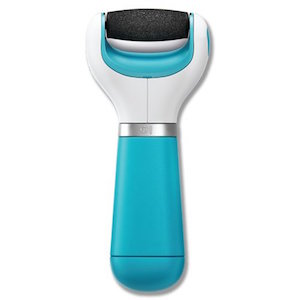 | - Easy to use - Needs 4 AA batteries - The cylindrical head spins 360 degrees |  (5 / 5) (5 / 5) | |
| Best Manual File Scraper | 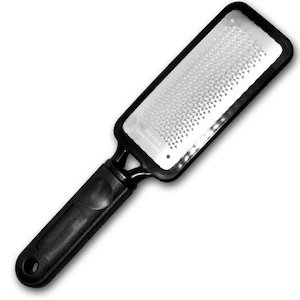 | - Perfect solution for dry, calloused and cracked heels - Large yet light weight design - Gives equally good results on both dry and wet foot surfaces |  (5 / 5) (5 / 5) | |
| Best Callus Gel Remover | 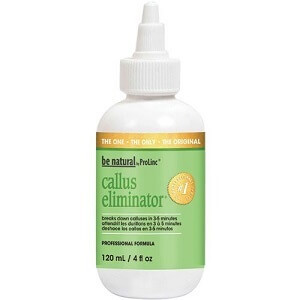 | - Does the work for you - Breaks down calluses in 3-5 minutes - Simply file or buff calluses away |  (5 / 5) (5 / 5) |
Foot Corn Causes
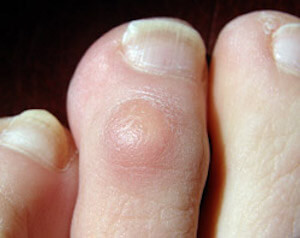 Corns are known to be caused by tight shoes and can not only be painful, but make our feet look a little ugly. Corns on the feet can build up from the wrong walking motion, however most are brought about by ill-fitting shoes. Unfortunately I found out the hard way that high-heeled shoes are one of the main causes of corns as they put weight on the toes and can make us ladies four times as likely as men to having foot issues. I typically found I would get a corn on the pinky toe and sometimes a corn on the big toe.
Corns are known to be caused by tight shoes and can not only be painful, but make our feet look a little ugly. Corns on the feet can build up from the wrong walking motion, however most are brought about by ill-fitting shoes. Unfortunately I found out the hard way that high-heeled shoes are one of the main causes of corns as they put weight on the toes and can make us ladies four times as likely as men to having foot issues. I typically found I would get a corn on the pinky toe and sometimes a corn on the big toe.
In addition to the pain, other issues for building up corns on feet include foot distortions and needing to wear shoes without socks, which can lead to further rubbing on the feet. We wrote a detailed guide on what are the best shoes for callused feet so make sure to check that out.
Pressure or rubbing can bring about either plantar calluses or soft corns. If you or your children build up a corn that does not form as a results of pressure, have it taken care of by a specialist as it could be a wart or created by a splinter caught under the skin. For most of us, our feet spend most of their time closed in a dark, warm environment which is unfortunately perfect for supporting microscopic organisms. Staph diseases can begin when microorganisms enter corns through breaks in the skin and cause the tainted corn to discharge fluid or pus.
Since tight shoes are prominently known to be the common driver of corns, bad stitches and the crease in shoes rubbing against the toes’ skin persistently, might likewise bring about corns. It’s better to wear good shoes with a lot of space for the toes. Wearing these kinds of shoes will decrease erosion and counteract recurrence once you’ve disposed of the corns.
Types of Corns
Before you can absolutely remove corns on your pinky toe or in between your toes, it may be handy to get your head around the different types of corns. Despite the fact that there are diverse foot issue and types of corns, there are three main types of corns;
- Hard Corn: A hard corn is a little patch of thickened, dead skin that have central core. Hard corns generally show up on the top or the side of the little toe, and these are the parts of the toes’ skin where tight shoes apply more pressure on.
- Soft corn: A soft corn has a much more slender surface and most of the time, they appear between the fourth and fifth toes. They are called soft corns since they are soft, because of the moist impacts of the sweat between the toes. These kinds of corns have a bigger number of propensities to end up contaminated than hard corns.
- Seed corn: A seed corn is a minor, discrete callous that can be extremely tender if it’s on a pressure-bearing part of the foot. Seed corns have a tendency to happen on the bottom of the feet, and a few specialists believe this condition is brought about by plugged sweat ducts.
Best Way to Remove Corns from Feet and Toes
Treating corns might take quite a while, so once you’ve found the right foot corn treatment for you, it’s important to remain patient. There are various sorts of chemical treatments that can get rid of corns on your feet and toes. It isn’t ideal to be walking around with corns on our toes, so I’m going to be giving you some successful tips on the most effective ways I’ve found for foot corn removal.
- Salicylic acid: These medications ought to contain ‘Salicylic acid’, which is useful for disposing of skin inflammation as well as various foot issues. Salicylic acid is a keratolytic, it breaks up the protein (keratin), which makes up the yellowish thick swollen layer of dead skin that structures on or the side of the little toe. Salicylic acid medications have distinctive structures, which could be ointments, pads drops, salves and mortars. Be certain you follow the guide for use on the pack of any treatment you choose to buy.
- Goldenseal extracts and tree oil: If you have an infected corn, use liquor free ‘goldenseal concentrate and tree oil’ to diminish the infection and enhance speedy mending. For the pain and itching, you can use a cotton ball or cotton fleece to absorb some ‘Burow’s solution’ and cold water, then dab this onto the affected area 3 times each day for 15 – 20mins every time.
- Raw vegetables and fruit juices: Lacking vitamin E, vitamin A or potassium could advance the development of corns. Taking raw vegetables and fruit product juices, will help with adjusting the causticity of your system furthermore counteract new corns or re-occurrence. It can also be worth reducing your intake of caffeine, meats, sugar, fried and processed foods.

- Vinegar Folk Remedy: There is also a natural solution that is moderate, exceptionally safe, and an effective way to treat corns. Don’t worry, you won’t need to add bread or vinegar to your plate of mixed greens – you can actually use them both to remove corns. It’s known as the ‘Bread and Vinegar Folk Remedy’. Above all else, you disintegrate a little bit of bread into a cup, include one tablespoon of vinegar, leave for 30 minutes, then make a glue and apply on the corn overnight. This lessens soreness and dries out the corn, proceed with application until you get the outcome you need.
- Lukewarm water: To soften hard corns and reduce the pain, soak your feet in warm water for whatever length of time that you’re happy to relax for, then dry your feet. When they’re dry, rub fresh lemon on the corns, add salt to the warm water and place your feet into the solution. After some time, pour the salted water away, get another bowl of warm water, put your feet in bowl for 10 minutes, dry your feet, apply Shea butter (Ori) on the corn and massage it lightly.
This is probably one the most natural, relaxing and kind corn removal home remedies I’ve found to remove corns on bottom of feet, corns on little toe and between toes. If you like the idea of this and want to take things to the next level – check out our post on the benefits of using foot spa baths where we can also let you in on the best at home foot spa baths!
Conclusion
Always protect your feet from touching the floor, particularly in areas that many people pass through, wear your shoes that are good for your feet, don’t share your socks, shoes, towels and so forth or anything thing that touches your feet. That being said, if you end up getting corns on your feet, hopefully this article share some ideas on how to treat corns. Try them out and see how it works out.
If you have severe corns, please visit a podiatrist to get a more propelled treatment and have it removed surgically. You can check out this video to see what a doctor can do to remove corns from your feet

